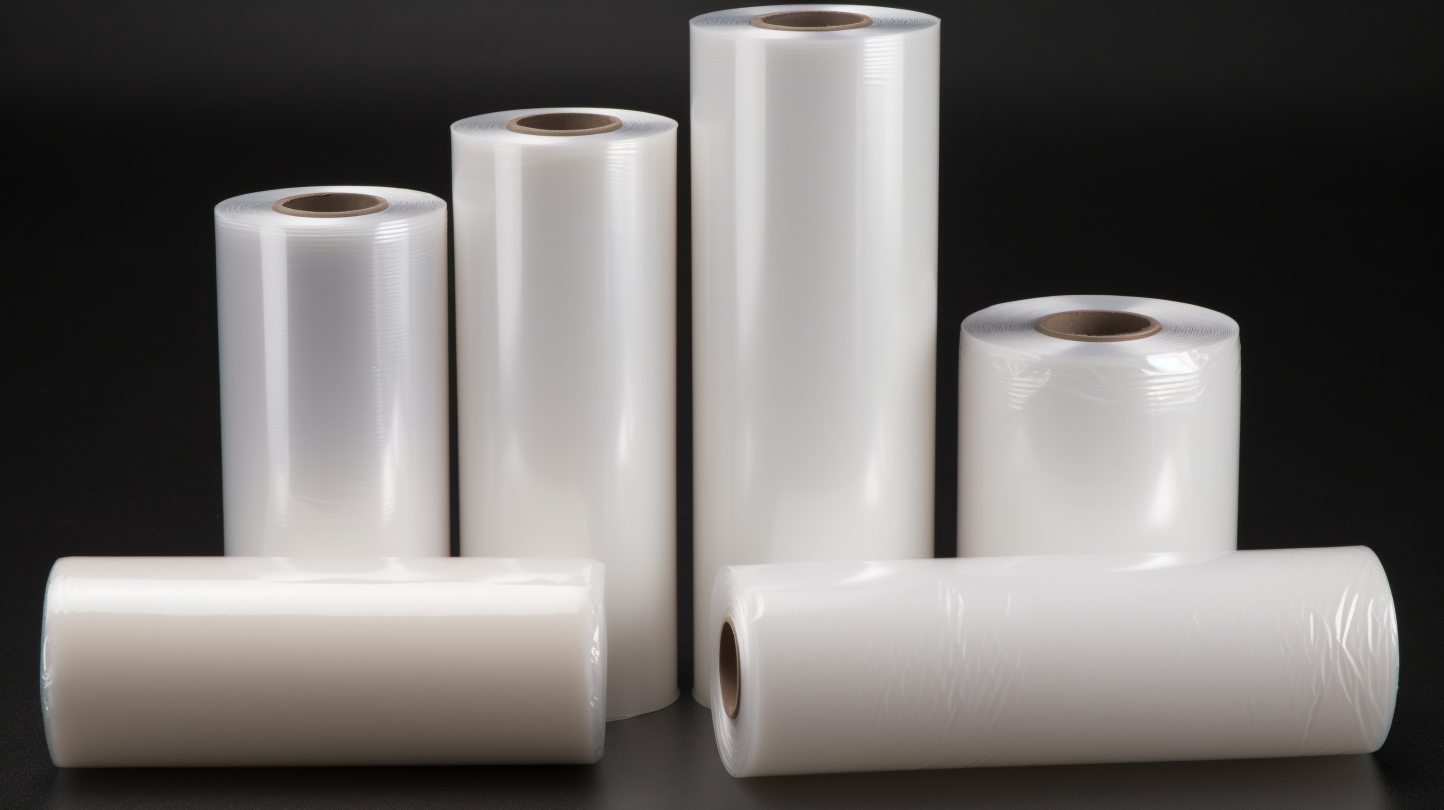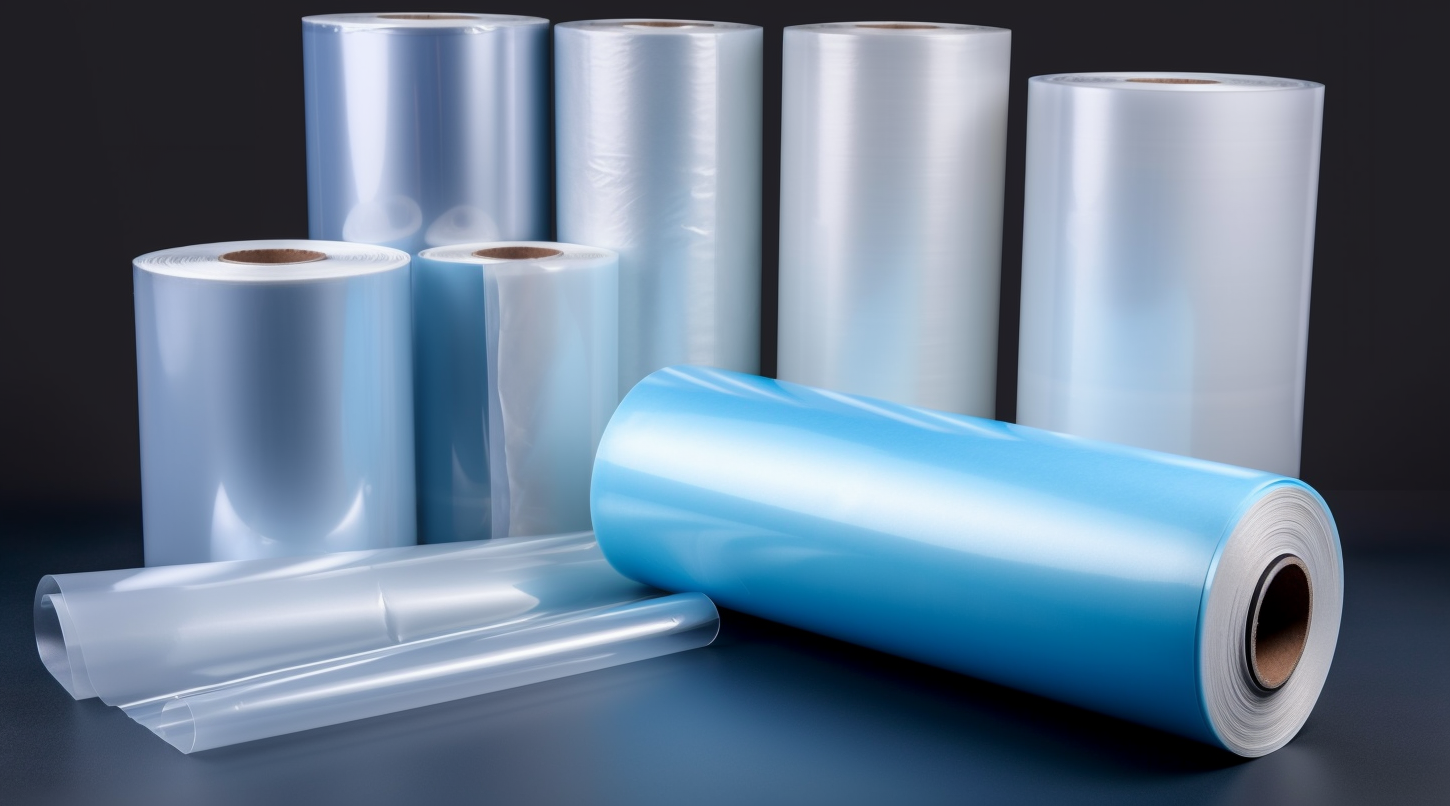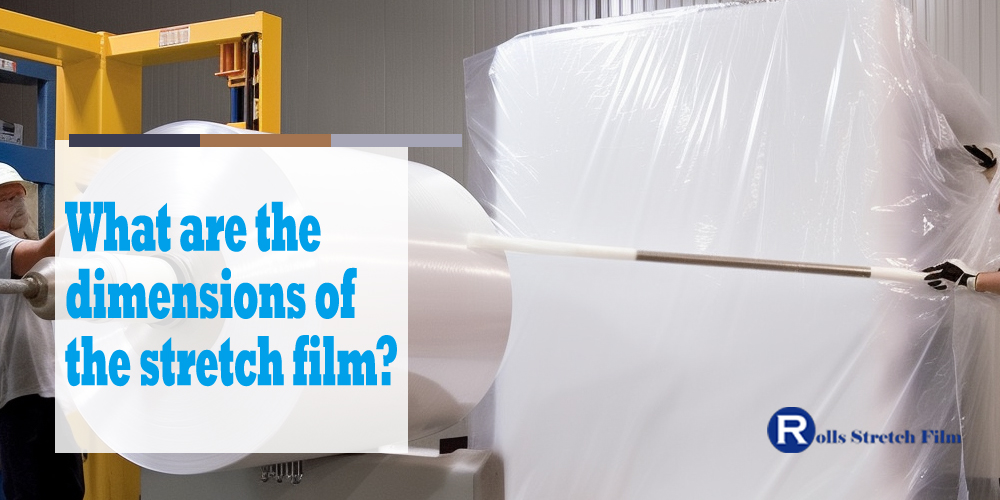Are you looking for information on the size of the stretch film? If so, you’re in the right place. Knowing the size of the film can help you make the most effective choice. Here, we’ll discuss the dimensions of stretch film and how to measure it correctly.
The width of stretch film typically ranges from 2 inches (50mm) to 30 inches (750mm) or more, and the length of the roll can vary from a few hundred feet to several thousand feet. The thickness of the stretch film is usually can range from 6 to 70 microns (0.24 to 2.75 mils) or more.
Know about the importance of knowing the dimensions of the stretch film including its width, length, thickness, and other considerations. Read on to find out more!

Importance of knowing the dimensions of stretch film
Knowing the dimensions of stretch film is important for several reasons:
- Proper application: Choosing the right width and length of the stretch film ensures that the product is used effectively to wrap and protect the load. Using the correct dimensions will help to ensure that the stretch film is applied in a way that provides adequate coverage and stability to the load.
- Cost-effective: Selecting the appropriate dimensions of stretch film can help reduce costs associated with the overuse or underuse of the film. Using too much film can result in unnecessary expenses, while using too little film may result in insufficient protection for the load.
- Safety: Proper use of stretch film can help reduce the risk of damage or injury during transport or storage. Choosing the right dimensions of stretch film can ensure that the load is secured and protected, reducing the risk of damage to the load or injury to workers.
- Efficiency: Using the correct dimensions of stretch film can help improve the efficiency of the packaging process. Having the right size of stretch film allows for faster and easier application, which can help reduce labor costs and improve overall productivity.
What are the dimensions of the stretch film?
Standard widths of stretch film
The standard widths of stretch film can vary depending on the manufacturer and the specific product. However, some common widths are widely used in the industry. These include:
5 inches (127mm)
12 inches (305mm)
15 inches (381mm)
18 inches (457mm)
20 inches (508mm)
30 inches (762mm)
It’s important to note that these are not the only widths available and certain manufacturers might provide additional sizes.
Factors that influence choosing the correct width of stretch film for application
Several factors can influence the choice of the correct width of stretch film for a particular application. These include:
- Size and shape of the load: The size and shape of the load being wrapped are key factors to consider when selecting the width of stretch film. A broader piece of film would be necessary to efficiently tie and wrap a heavier load.
- Weight of the load: The weight of the load being wrapped can also influence the choice of the correct width of stretch film. A heavier load may require a wider and thicker film to provide the necessary strength and stability.
- Type of packaging equipment: The type of packaging equipment used to apply the stretch film can also affect the choice of the correct width. Different equipment may require different widths of film to ensure proper application and maximum efficiency.
- Level of protection required: Another vital issue to think about is the degree of protection needed for the weight being wrapped. A broader and thicker film can be necessary for a better level of protection to make sure the load is securely fastened and protected.
- Cost considerations: The cost of the stretch film is also a factor that may influence the choice of the correct width. Using a wider film may be more expensive, so it’s important to balance the need for proper protection with cost considerations.
Length Dimension
Standard lengths of stretch film
The standard lengths of stretch film can vary depending on the manufacturer and the specific product. However, some common lengths are widely used in the industry. These include:
500 feet (152 meters)
1000 feet (305 meters)
1500 feet (457 meters)
2000 feet (610 meters)
3000 feet (914 meters)
It’s important to note that these are not the only lengths available, and some manufacturers may offer other sizes as well.
Factors that influence choosing the correct length of stretch film for application

Several factors can influence the choice of the correct length of stretch film for a particular application. These include:
- Size and shape of the load: It’s crucial to consider the size and shape of the load being wrapped when deciding how much stretch film to use. A longer film could be required to guarantee that a heavier weight is adequately wrapped and attached.
- Weight of the load: The weight of the load being wrapped can also influence the choice of the correct length of stretch film. A heavier load may require a longer and thicker film to provide the necessary strength and stability.
- The number of wraps needed: A further crucial issue to take into account is the number of wraps required to adequately protect the cargo. A longer film could be necessary if there are more wraps to guarantee that the load is securely covered and fastened.
- Level of protection required: The level of protection required for the load being wrapped is also an important factor to consider. A higher level of protection may require a longer and thicker film to ensure that the load is properly secured and protected.
- Cost considerations: The cost of the stretch film is also a factor that may influence the choice of the correct length. Using a longer film may be more expensive, so it’s important to balance the need for proper protection with cost considerations.
Thickness Dimension
Standard thicknesses of stretch film
The standard thicknesses of stretch film can vary depending on the manufacturer and the specific product. However, some common thicknesses are widely used in the industry. These include:
- 60 gauge (15 microns)
- 70 gauge (18 microns)
- 80 gauge (20 microns)
- 90 gauge (23 microns)
- 100 gauge (25 microns)
It’s important to note that these are not the only thicknesses available, and some manufacturers may offer other sizes as well.
Factors that influence choosing the correct thickness of the stretch film for application
Several factors can influence the choice of the correct thickness of the stretch film for a particular application. These include:
- Size and weight of the load: The size and weight of the load being wrapped are key factors to consider when selecting the thickness of the stretch film. A larger or heavier load may require a thicker film to provide the necessary strength and stability.
- The fragility of the load: The fragility of the load being wrapped can also influence the choice of the correct thickness of the stretch film. A delicate or fragile load may require a thicker film to provide extra protection during transport or storage.
- Mode of transportation: The mode of transportation can also affect the choice of the correct thickness. For example, if the load is being transported by truck or train, a thicker film may be necessary to protect against vibrations and bumps during transit.
- Level of protection required: The level of protection required for the load being wrapped is another important factor to consider. A higher level of protection may require a thicker film to ensure that the load is properly secured and protected.
- Cost considerations: The cost of the stretch film is also a factor that may influence the choice of the correct thickness. Using a thicker film may be more expensive, so it’s important to balance the need for proper protection with cost considerations.
Other Considerations
Pre-stretching and post-stretching options
Pre-stretching is a process where the stretch film is stretched before being applied to the load. This is typically done using a pre-stretch machine, which stretches the film up to a certain percentage of its original length. Pre-stretching can help to reduce the amount of film used, improve load stability, and reduce packaging waste. It can also improve the overall efficiency of the packaging process by reducing the number of times the film needs to be changed.
Post-stretching, on the other hand, is a process where the stretch film is stretched after being applied to the load. This can be done manually or by using a post-stretch machine. Post-stretching can help to improve load stability and reduce the risk of damage during transport or storage. It can also help to reduce the amount of film used, as the film is stretched to its maximum capacity after being applied to the load.
Color options for stretch film
Stretch film is available in a range of colors, although clear is the most common color used. Other color options for stretch film include black, white, blue, green, and red. The choice of color will depend on the specific application and the desired level of visibility, identification, or branding.
Black stretch film, for example, is often used for applications where the load needs to be concealed or protected from UV light. White stretch film is often used for applications where the load needs to be visible or easily identified, while the blue, green, and red stretch film can be used for color coding or branding purposes.
In addition to solid colors, stretch film is also available with printed designs, logos, or labels. This can help to improve the visibility or identification of the load or provide branding opportunities. Overall, the choice of color for the stretch film will depend on the specific requirements of the application, and the desired level of visibility, identification, or branding.
Environmental considerations for stretch film
Stretch film, like other plastic products, has environmental impacts that should be considered. Here are some environmental considerations for the stretch film:
- Waste generation: The stretch film is often used for packaging and can create a significant amount of waste, especially in high-volume applications. The disposal of stretch film can have negative impacts on the environment, including littering and pollution.
- Recycling: Stretch film can be recycled, but it requires a specific recycling process and infrastructure. Not all recycling facilities are equipped to recycle stretch films, and it is important to check with local recycling facilities to determine if they accept the stretch film.
- Biodegradability: The stretch film is not biodegradable and can persist in the environment for hundreds of years, contributing to pollution and other negative impacts.
- Renewable resources: Some stretch film manufacturers are using renewable resources, such as plant-based materials, to create a stretch film. These materials can help to reduce the environmental impacts of stretch film production and disposal.
- Efficient use: Efficient use of stretch film can help to reduce waste and environmental impacts. This includes using the correct amount of film for the load, pre-stretching the film to reduce the amount used, and properly disposing of the film after use.

The dimensions of the stretch film will depend on the specific needs of the individual or organization. In general, it is important to consider the size of the items you are wrapping, the amount of stretch film needed, and the environment in which you plan to use the stretch film when selecting the appropriate dimensions. Ultimately, finding the right dimensions of the stretch film will help you ensure efficient, secure wrapping of your items.














